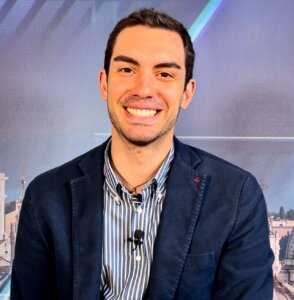PHOTOS: The raw power of Jewish diversity across four continents
Photographer Zion Ozeri traveled the world to show how Jews look and live differently from each other
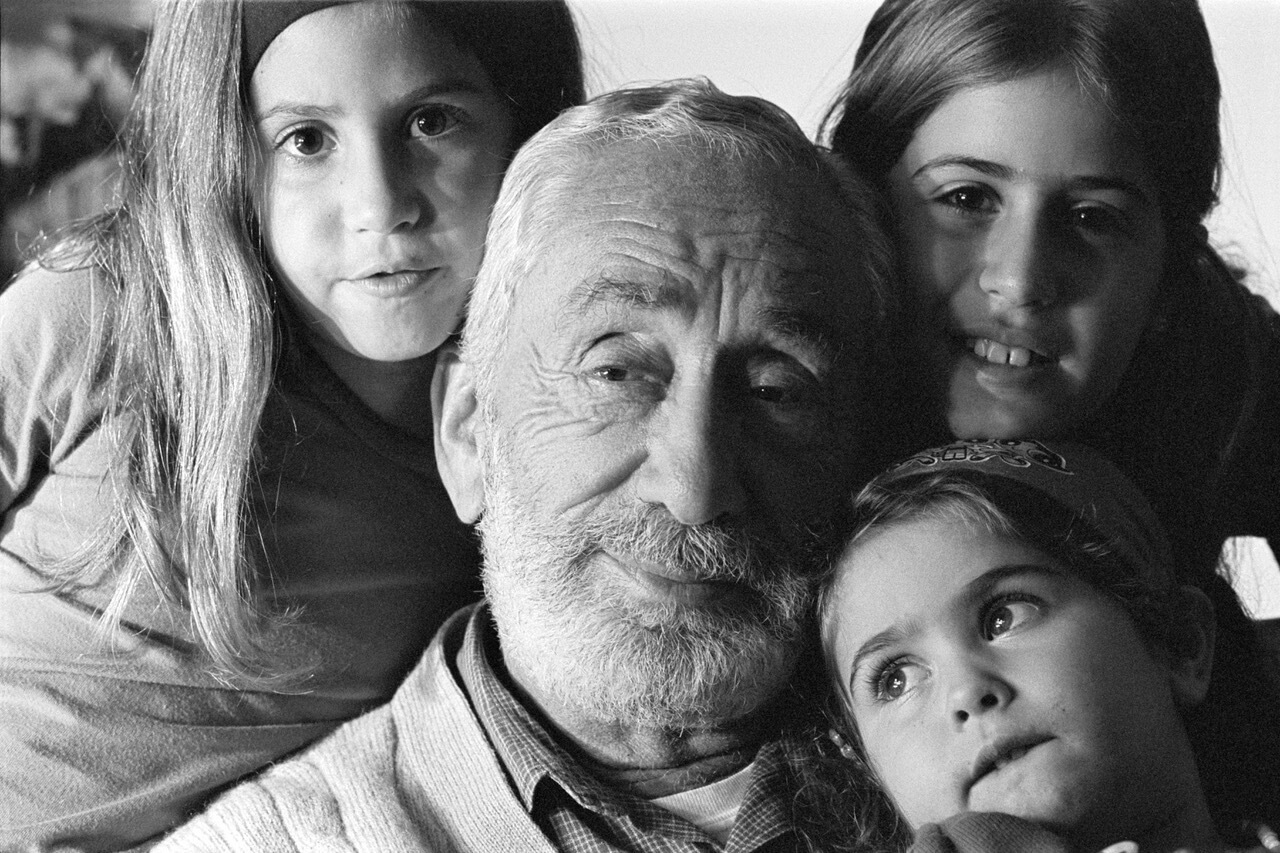
Holocaust Survivor, Buenos Aires, Argentina, 2002. Courtesy of Zion Ozeri
A smashed and shattered Jewish woman’s grave in Buenos Aires; a Holocaust survivor smiling peacefully, surrounded by his grandchildren; circumcision ceremonies in poverty-stricken Bukhara, Uzbekistan, and wealthier Mexico City; a portrait of a Jewish scribe in Berkeley, California.
These scenes of Jewish life are part of the exhibition Jewish Identity/Jewish Diversity, which opened this week at Columbia University’s School of Social Work. It features some of the most striking photographs taken by Zion Ozeri, a Jewish photographer born to Yemeni immigrants in Israel and currently living in New York City.
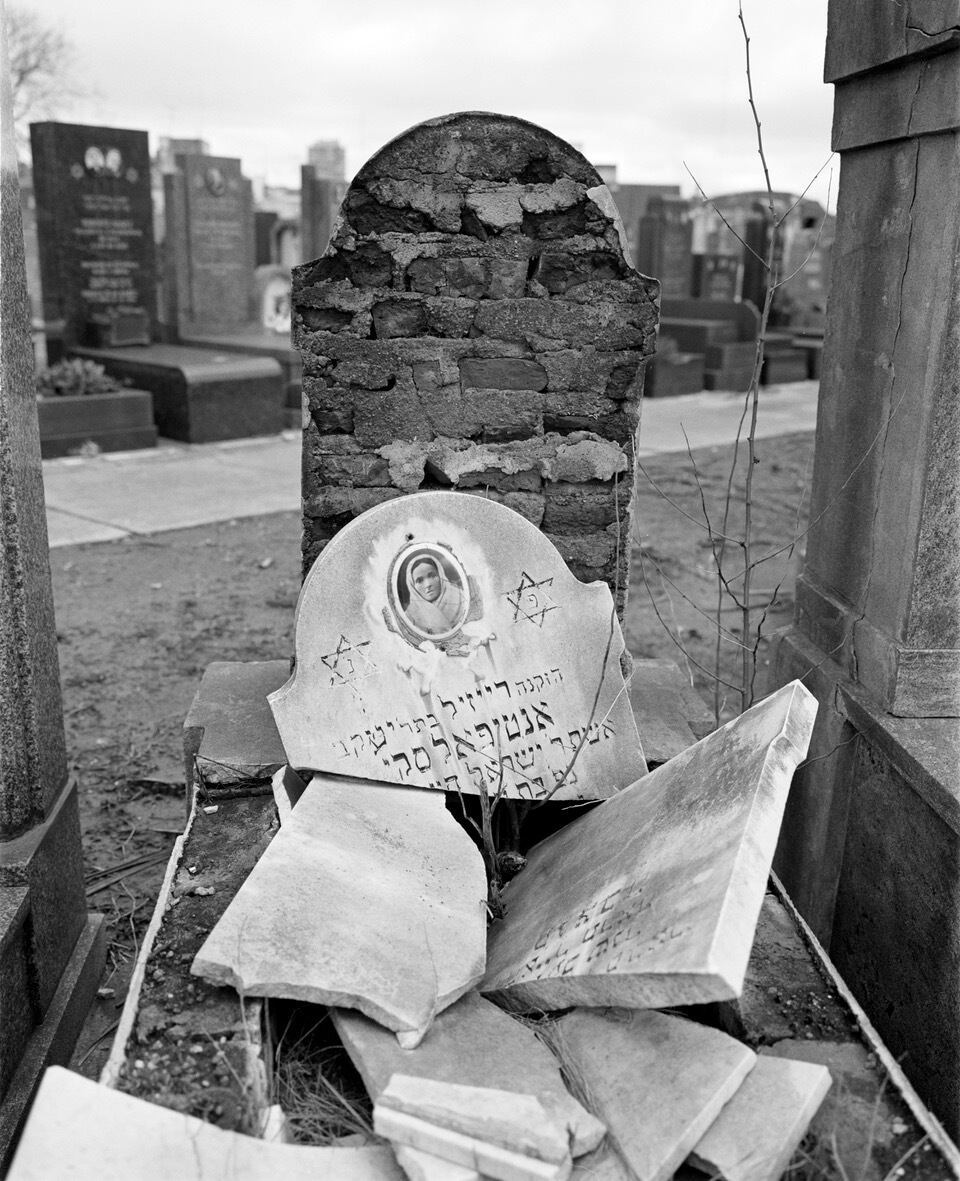
Over the past 40 years, Ozeri has traveled around the U.S., Mexico, Colombia, Brazil, Argentina, Europe, Uzbekistan, Russia, Israel, Tunisia, Yemen and India to immerse himself in Jewish communities. In his work, he aims to portray a diverse people and mark the cultural differences that make Jewish communities unique. The exhibition includes about 50 black-and-white shots, taken between 1984 and 2010, that chronicle historical events that changed the lives of thousands of Jews, such as Operation Solomon in 1991, alongside scenes of everyday Jewish life.
“There’s a wedding in India, a vandalized cemetery in Buenos Aires,” Ozeri said. “When we compare these diverse communities, exciting connections and insights emerge.”
The exhibit, which opened Wednesday, will continue through the spring, though it may move to the university’s main campus in January.
Photographing emotion
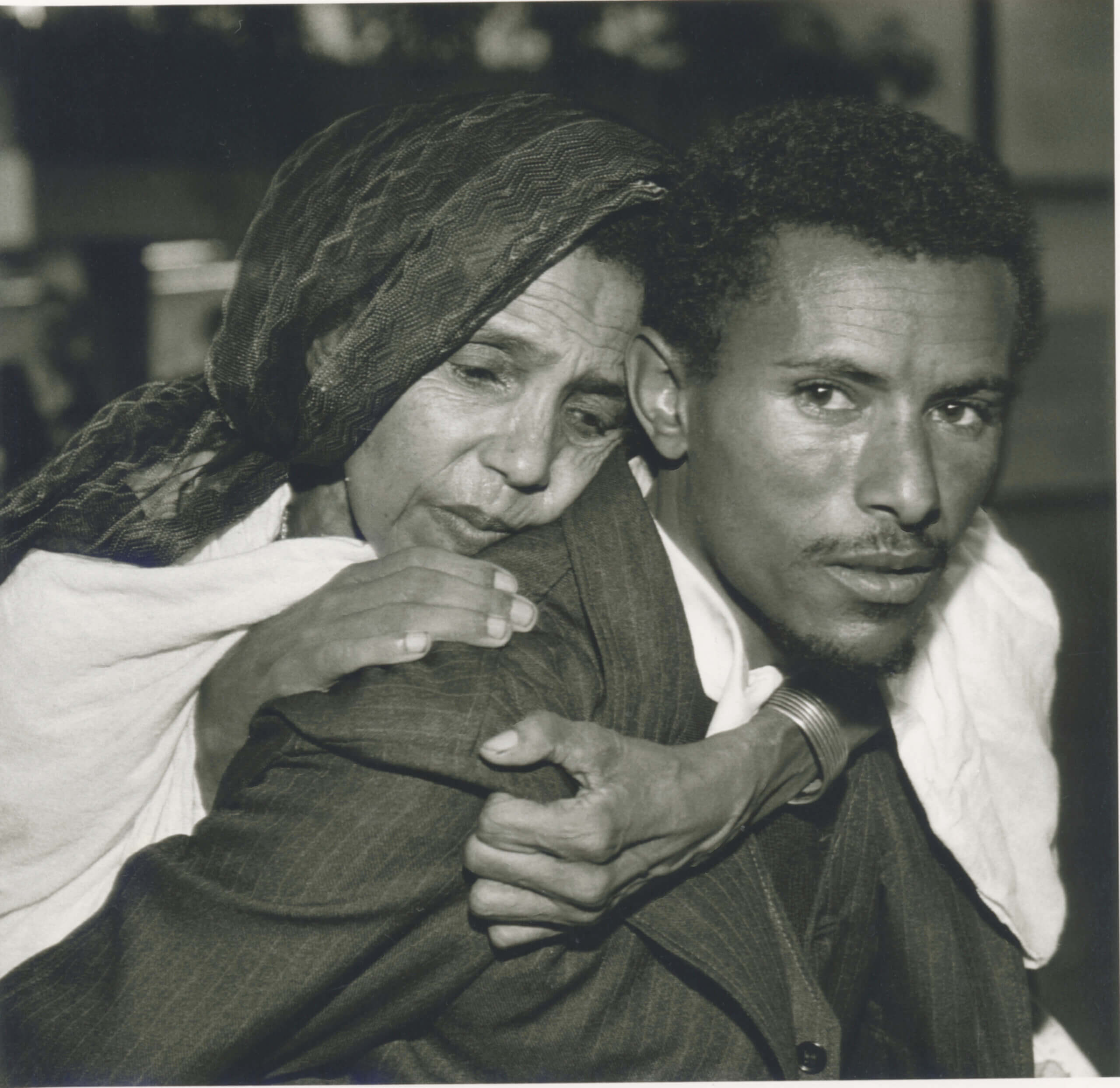
At the exhibit’s opening, two Columbia School of Social Work students, Audrey Laboz, 22, and Aida Kimberly, 23, stopped in front of a photograph of a Black man, his face exhausted and frightened, who carries an elderly woman over his shoulder, her head covered by a long scarf. They asked Ozeri for details about the picture, titled Backpack, which he captured at Ben Gurion Airport.
“This is a guy carrying his mother,” Ozeri said. “I was privileged to be there at the right time, during Operation Solomon in 1991, when Israel brought close to 15,000 Black Ethiopian Jews with a secret air train operation.“
“This mother was paralyzed from the waist down,” Ozeri continued. “His son was carrying her on his back off the plane. I took a few photographs, but we chose this one because you can truly see the emotion.”

Combating antisemitism
The exhibit is part of the school’s ongoing efforts, championed by Dean Melissa Begg, to counter antisemitism, including its recently established Antisemitism Working Group, a field trip to Israel, a series of prominent Jewish speakers and a visit to a synagogue in Harlem to learn about the Black Jewish community.
“I had students who came to me all the time and told me that their parents had told them, ‘Don’t show your Judaism, it’s not safe,’ or ‘Don’t mention Israel if you have a connection to Israel, it’s not safe,’” said Amy Werman, a professor at the school, and chair of its Antisemitism Working Group. “At some point I felt that something had to be done about it.”
At the exhibit’s launch, Ozeri’s work seemed to convey his intentions.
“I feel like society tries to put Jews in boxes,” said Kimberly. “So many times, I heard ‘Oh, you don’t look that Jewish.’ I love that Ozeri went around the world and took different pictures of different customs we have, and put them all together.”
For Ozeri, one of the most challenging communities to photograph was the Yemeni — even though his family is part of it. “In Sa’da, Yemen, the religious community dressed differently from me,” Ozeri said. “But I told them that my parents were Yemenis as well. One Friday night we were praying in a private house, and they asked me to sing one of the local religious melodies, and I was able to sing. I realized they wanted to check whether I was real or not.”
The exhibition will help people understand that Jews, who come from many different cultures, are still all Jews, said Laboz. “There is no one way to define Judaism. There are hundreds of different ways.”
The Forward is free to read, but it isn’t free to produce

I hope you appreciated this article. Before you go, I’d like to ask you to please support the Forward.
Now more than ever, American Jews need independent news they can trust, with reporting driven by truth, not ideology. We serve you, not any ideological agenda.
At a time when other newsrooms are closing or cutting back, the Forward has removed its paywall and invested additional resources to report on the ground from Israel and around the U.S. on the impact of the war, rising antisemitism and polarized discourse.
This is a great time to support independent Jewish journalism you rely on. Make a gift today!
— Rachel Fishman Feddersen, Publisher and CEO
Support our mission to tell the Jewish story fully and fairly.
Most Popular
- 1

Fast Forward Ye debuts ‘Heil Hitler’ music video that includes a sample of a Hitler speech
- 2

Opinion It looks like Israel totally underestimated Trump
- 3

Culture Cardinals are Catholic, not Jewish — so why do they all wear yarmulkes?
- 4

Fast Forward Student suspended for ‘F— the Jews’ video defends himself on antisemitic podcast
In Case You Missed It
-

Culture Should Diaspora Jews be buried in Israel? A rabbi responds
-

Fast Forward In first Sunday address, Pope Leo XIV calls for ceasefire in Gaza, release of hostages
-

Fast Forward Huckabee denies rift between Netanyahu and Trump as US actions in Middle East appear to leave out Israel
-
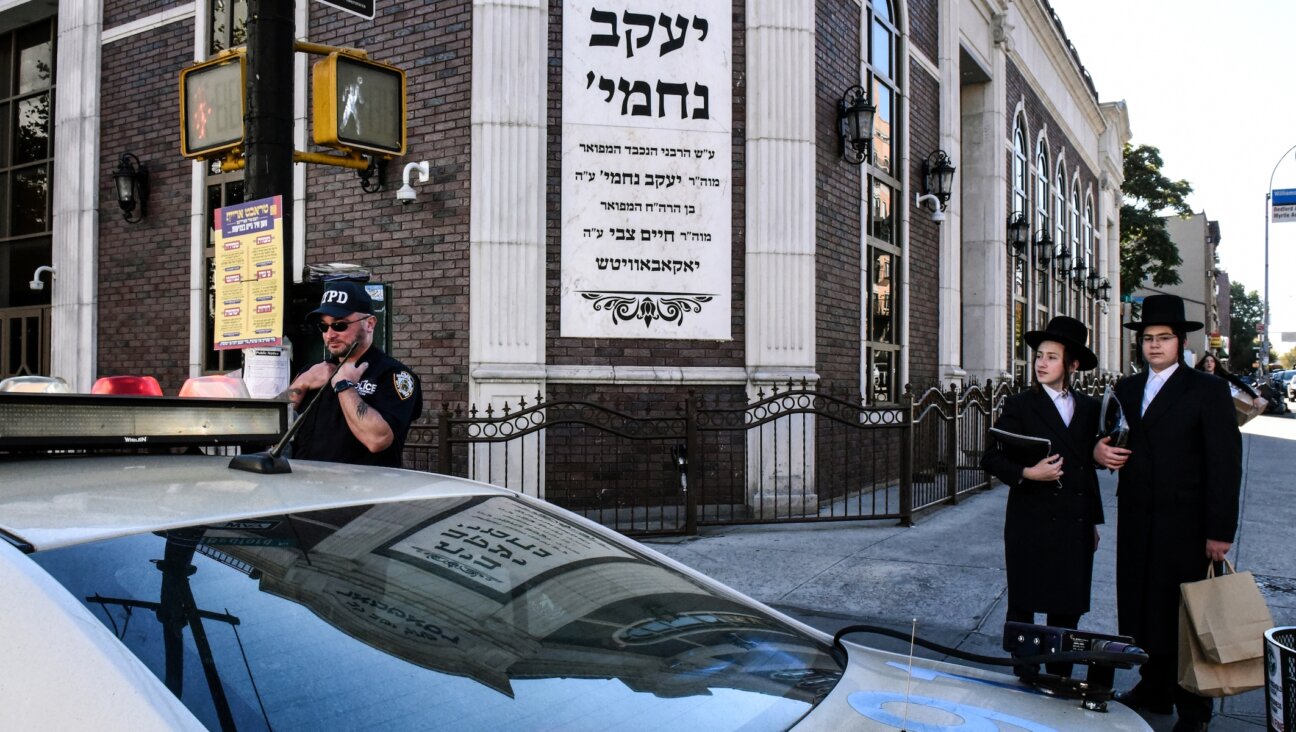
Fast Forward Federal security grants to synagogues are resuming after two-month Trump freeze
-
Shop the Forward Store
100% of profits support our journalism
Republish This Story
Please read before republishing
We’re happy to make this story available to republish for free, unless it originated with JTA, Haaretz or another publication (as indicated on the article) and as long as you follow our guidelines.
You must comply with the following:
- Credit the Forward
- Retain our pixel
- Preserve our canonical link in Google search
- Add a noindex tag in Google search
See our full guidelines for more information, and this guide for detail about canonical URLs.
To republish, copy the HTML by clicking on the yellow button to the right; it includes our tracking pixel, all paragraph styles and hyperlinks, the author byline and credit to the Forward. It does not include images; to avoid copyright violations, you must add them manually, following our guidelines. Please email us at [email protected], subject line “republish,” with any questions or to let us know what stories you’re picking up.



